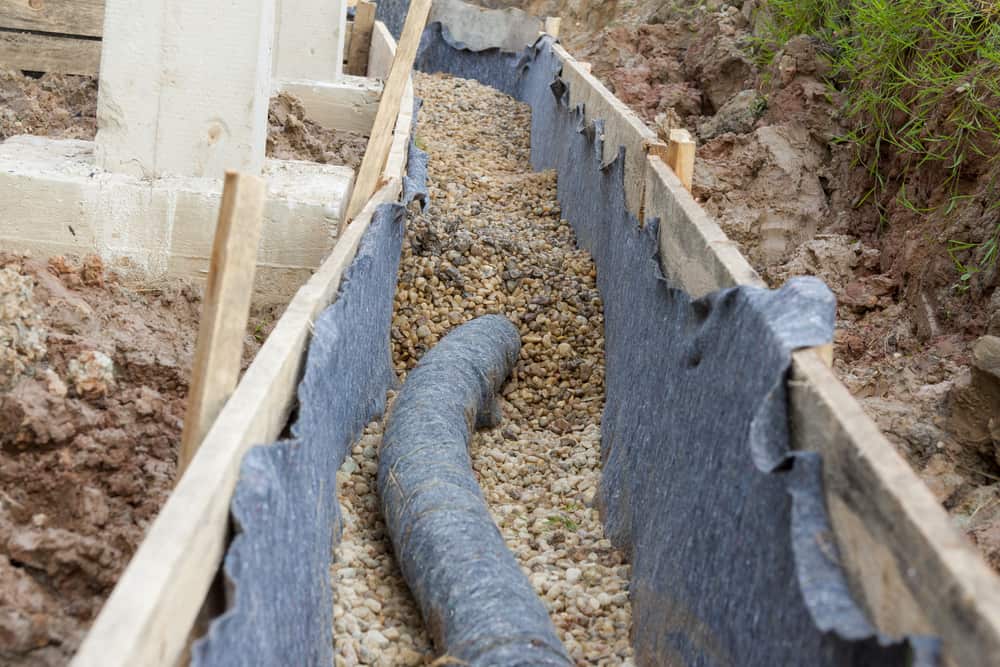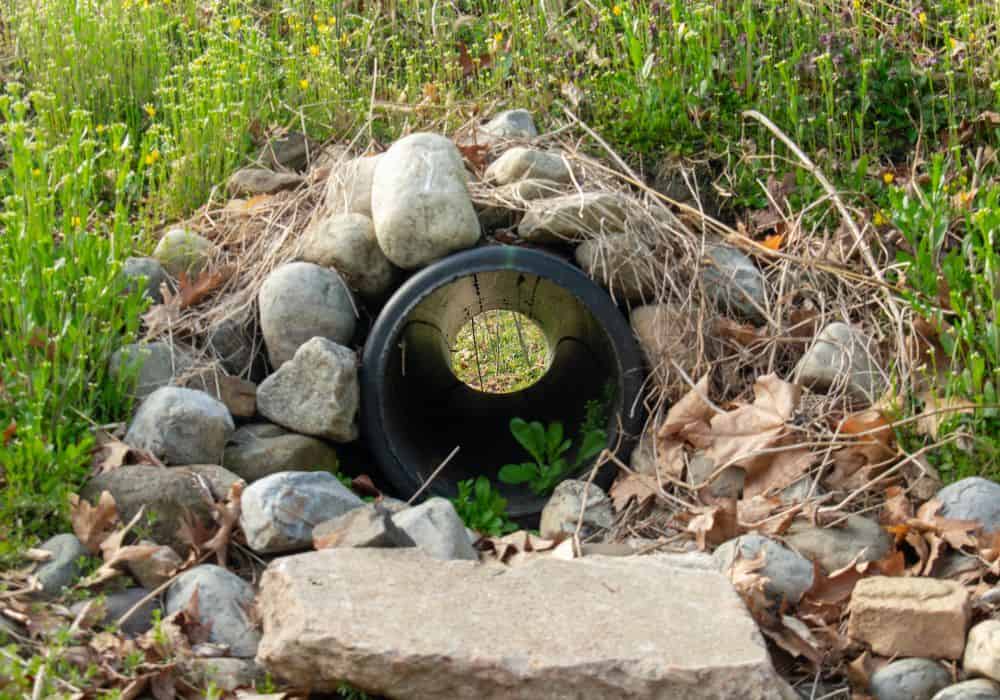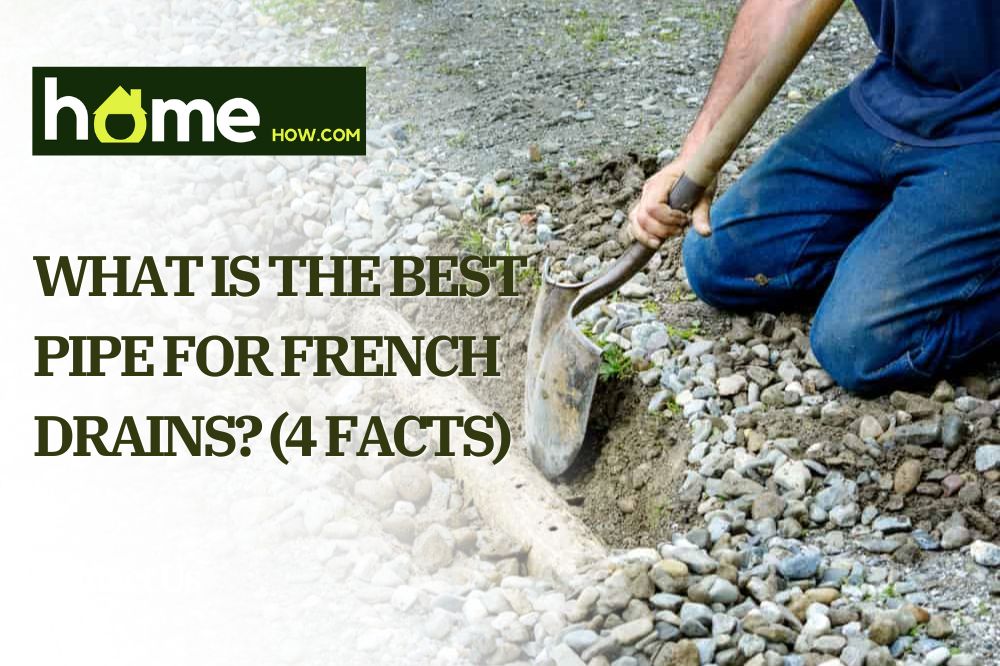Of all the nightmare situations to wake up to, flooding is somewhere near the top. While we think of this as a chance issue usually related to heavy rains, it can happen to anyone with poor drainage in their lawn.
French drain systems are more common than you think, and they’re used wherever water pools or flooding are likely to occur. In order for a French drain to be successful, you must use the best pipes for the job.
In this article, we explain what you need from a pipe for it to work successfully in a French drain. We also explore the most common types of pipe used for these drains and help you understand the advantages and disadvantages of each one.
How a French Drain Works
Before we dive into pipe options, let’s look into French drain systems and how they work to combat excess surface water and groundwater.
French drains are usually installed when heavy precipitation causes water to accumulate in your yard and even flow toward your home. Without the right system to combat this issue, the flooding is likely to cause water damage and unsettle your foundation.
A French drain involves digging a trench to direct the water flow away from your home. You then lay perforated drainage piping at the bottom of the trench and cover it with a layer of gravel or stone.
Water, which follows the pull of gravity, travels down into the ground, enters the drain, and then follows the drainage piping away from your home.
For a French drainage system to work successfully, you need to find pipes with a few key characteristics.
French Drain Pipe Considerations
When choosing the best pipe for a French drain, you want something that is:
- Durable material
- Perforated pipe (or easy to perforate)
- Easy to install
- Large enough for proper drainage
These basic characteristics help you find a pipe material that’s simple to work with and get the job done.
1. Durability
The first thing to look for is a pipe with great durability. While the pipe doesn’t need some of the fancier features of water supply lines, you still need something that can hold up against:
- The pressure of dirt and gravel above it
- The stress of living underfoot
- Sharp rocks, sticks, sediments, and other debris
This durability ensures that your French drain pipe does not fail.
2. Perforation

Most pipes available for French drains come pre-perforated. These appear as slits or sometimes circular holes, and are key to allowing your drain to accept the excess water.
French drain pipes do better with slits as they still allow water to enter but do a better job of keeping out dirt or debris that would eventually clog your pipe.
You usually cover your pipe with water permeable landscape fabric for further protection against roots and weeds and set your perforations at the bottom.
By doing this, you reduce the chance of your pipe clogging without interfering with water transportation. The gravel below the perforations holds them up enough to protect from dirt and still allow water to enter from below.
3. Easy Installation and Upkeep
Aim for the French drain pipe that makes your life easier, both in terms of installation and likely success.
The pipes that we explore in the next sections have a great reputation for success, but their installation method varies.
While working with flexible piping is easier for a DIY project, it may not be worth what you miss from a rigid pipe installation.
4. Pipe Size

Pipe diameter is another factor to consider when choosing a French drain pipe. Your pipe should be at least 4 inches in diameter, and this size works well for most basic applications.
Those with a greater degree of flooring or those that expect plenty of debris in their drain should opt for a larger drain size, usually bumping up to 6 or 8 inches.
The length of the French drain pipe depends on what type of piping you choose and the path that it needs to take. Flexible pipes may not need as much length, whereas rigid piping may need to take a longer path due to fixed angles for turns.
Choosing the right size is essential for proper drainage away from your structure.
The Most Common Pipes Used for French Drains
Keeping those details in mind, there are two types of pipes that work best for French drains.
Corrugated pipes are easily identified by the ridges and grooves that make them both flexible and strong (two desirable elements for French drain pipes). PVC pipes are rigid, have a harder surface, and a smooth interior that improves your drain’s flow.
These pipes work better in different circumstances. Determining which one lines up best with your situation and needs is essential for the success of your French drain system.
Which Type of Pipe Works Better for French Drains?
The key areas of difference between corrugated pipe and PVC pipe are:
- Ease of installation
- Budget
- Durability and longevity
- Proper drain flow
Figure out what you need in these areas and then choose the pipe material that best lines up.
1. For Installation
Corrugated pipe is much easier to install, especially if your trench is primarily long, straight runs. In most cases, you can simply dig your trench and lay the corrugated pipe, fill, and be done with it.
This type of pipe is also more forgiving for trenches with more angles, twists, and turns. The flexibility usually navigates bends and corners without the need for fitting or cutting, leaving you with little extra work to do.
Solid PVC pipe, even on a simple run, requires more fittings to piece together your pipe lengths. While corrugated pipe comes in an uninterrupted 100 foot roll, PVC pipe lengths are often limited to 10 or 20 feet.
You need to spend extra time priming and cementing your PVC connections, and you may need to get creative when working around sharp declines or twists in your trench.
2. For Your Budget
Corrugated pipe is cheaper by far for similar pipe length. You can get 100 feet of 4-inch corrugated pipe for about $50 to $75 (depending on where you shop and how you have it delivered). You may also pay more for a pipe that comes perforated with aggregate mesh attached.
Corrugated pipe requires fewer fittings, and they can cost you anywhere from $2 to $10. Most corrugated pipe fittings simply snap on, reducing the need for pipe primer and solvent to connect.
PVC pipes only come in long lengths of pipe. You’ll pay anywhere from $100 to $200 for 100 feet of 4-inch schedule 40 PVC suitable for your French drain.
Perforated PVC will cost more because of the extra work. You also need to count on spending more for fittings, about $3 to $10. Using rigid PVC usually requires a greater length of pipe and more fittings, adding on to your already higher price.
In all, you’ll pay about twice as much if you choose rigid PVC pipe over corrugated PVC pipe.
3. For Durability and Longevity
While landscape drain pipes don’t usually have a lot of weight on them. PVC pipe has a higher chance of success and will last longer in most situations. Even light-duty PVC has a harder wall than corrugated pipes, and it’s unlikely to crack and fail.
You don’t choose corrugated pipe if you expect to need a more durable pipe. While you pay less and get an easier installation, corrugated pipe is more likely to crumple under pressure, and it’s more susceptible to damage from dirt, debris, and growing roots.
A common argument is that corrugated pipe is more flexible, and therefore less likely to crack under pressure. In reality, PVC pipe is plenty flexible under pressure (check out how it adjusts in the crush test video).
Corrugated pipe that crushes under pressure is more likely to crack in those areas, and you won’t get the original shape back. PVC pipe, which simply flexes and returns to its original shape, will last much longer.
4. For Proper Flow
PVC pipe also comes out on top for proper drain flow.
The ridges in corrugated pipes interfere with a smooth flow to start, but they are also more likely to catch any debris that makes its way into your pipe. This problem gets worse when you have uneven slopes in your trench.
It’s more difficult to address clogs in corrugated pipe as they’re often spread out across longer lengths of the pipe.
The smooth inner walls of PVC eliminate any drag and make it much easier to locate and address any issues with flow.
Conclusion
In most cases, corrugated pipe is the better choice for a French drain. It’s easier to work with, comes in at a fraction of the price, and usually offers sufficient strength and flow for residential applications.
While we point out that PVC pipes are stronger and enhance flow, you don’t need to make that jump unless you have extreme circumstances to deal with. Areas with greater traffic or an expectation for heavy debris should choose PVC.
Need help choosing the better pipe for a French drain in your yard? Drop any comments or concerns below.
